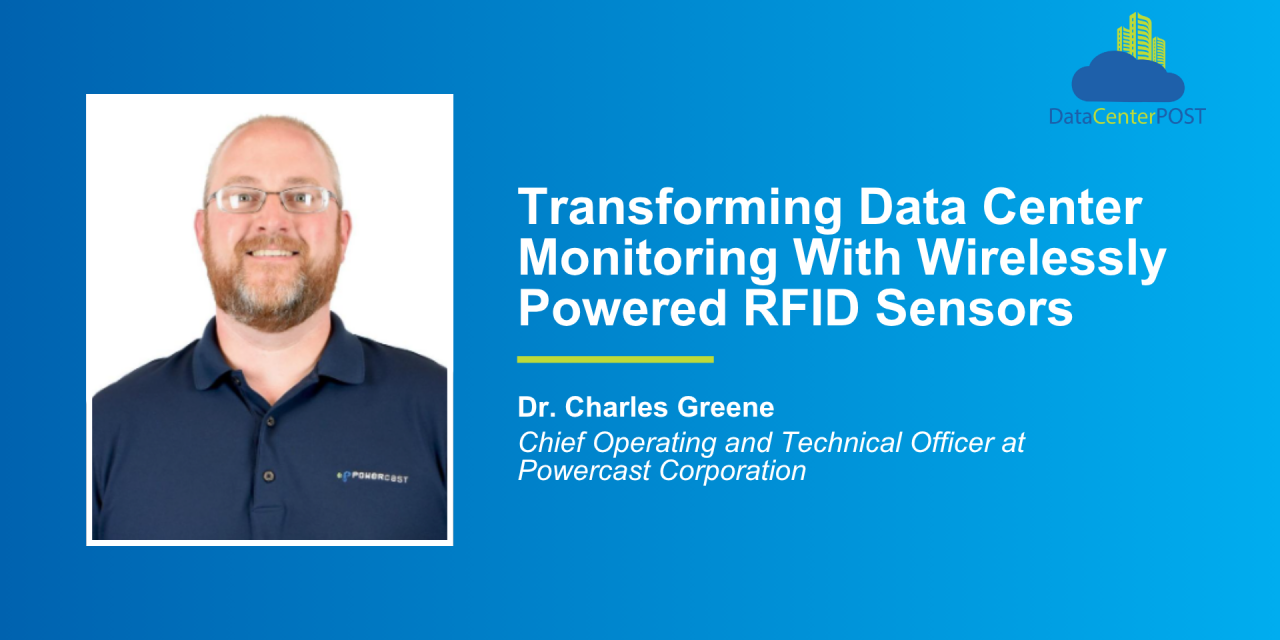As digital infrastructure rapidly expands, data centers must optimize performance, resilience, and sustainability. Passive RFID sensors are emerging as a key solution for efficient data center monitoring and management. Market projections show the global data center RFID market grew from $2.83 billion in 2024 to $29.2 billion by 2034, which is a 26.3% annual growth rate. This trend aligns with broader global adoption as passive RFID tags accounted for about 73% of the global RFID market share in 2023, driven by their battery-free, low-maintenance design and widespread adoption across industries.
Limitations of Traditional Sensor Systems
Conventional monitoring solutions, typically wired or battery-powered sensors, fall short in modern data center environments. Battery-powered sensors require ongoing maintenance and frequent replacement, raising both operational costs and the risk of downtime if replacements are delayed. Wired systems, while avoiding battery constraints, require complex installations that can be difficult in some buildings, and can be challenging to maintain. Cable routing in high-density server rooms complicates reconfigurations and slows adaptation to evolving layouts.
These systems also face challenges in scaling, as adding more sensors often introduces complex logistics, added labor, and increased failure points. Furthermore, outdated communication protocols and lack of encryption expose legacy systems to cybersecurity vulnerabilities, while signal degradation in long wired runs can compromise data accuracy and reliability.
The Advantage of Wirelessly Powered RFID Sensors
Wirelessly powered RFID sensors directly address these limitations. Using radio frequency energy, they operate without batteries, making them virtually maintenance-free. This self-sustaining design enables reliable, long-term monitoring, even in large, distributed, or hard-to-reach environments.
They also integrate seamlessly with existing infrastructure. Without the need for extensive rewiring or new power sources, deployment is faster and less disruptive. These sensors can be added incrementally, allowing data centers to scale their monitoring capabilities cost-effectively and in alignment with growth.
Enabling Real-Time Responsiveness
By continuously tracking key environmental parameters such as temperature, humidity, airflow, and vibration, passive RFID sensors enable immediate alerts when conditions deviate from optimal ranges. This allows operators to intervene quickly, preventing equipment failures and avoiding costly downtime.
When integrated with centralized monitoring platforms, passive RFID sensors offer a comprehensive view of environmental conditions across the entire facility. RFID technology has proven effective in streamlining operations, with results such as an 80% decrease in the time required for asset reconciliation and a 94% reduction in efforts to locate lost items.
Supporting Sustainable Operations
RFID also advances sustainability goals. Passive sensors eliminate battery waste, and their low-energy footprint contributes to greener operations. Real-time environmental data helps optimize cooling and ventilation systems, reducing energy usage and carbon emissions. These capabilities support compliance with environmental regulations and green building standards.
Proven Impact in Real-World Deployments
RFID tagging has enabled big retailers to decrease display shortages from 30% to 4-6% and reduce markdowns, driving a 2.6% increase in full-price sales.
Brands like Levi’s have achieved 98% inventory accuracy and reported corresponding sales gains. With RFID, inventory counts take only 20 minutes and can be done twice a day, enabling real-time replenishment.
IBM’s use of wireless Active RFID sensors and real-time automation in data centers cut asset reconciliation time by 80%, reduced search time for lost assets by 94%, and increased asset accuracy to 99.7%.
Passive RFID: The Smart Backbone of Tomorrow’s Data Centers
Passive RFID sensors are transforming data center operations by eliminating traditional limitations like batteries and wiring. They offer real-time visibility, low-maintenance scalability, and energy-efficient monitoring which are all essential for today’s fast-growing, sustainability-focused digital infrastructure. As demand for agility, uptime, and environmental accountability rises, passive RFID will be a cornerstone of technology, enabling data centers that are not only smarter, but also greener and more resilient.
# # #
About the Author
Dr. Charles Greene is the Chief Operating and Technical Officer of Powercast Corporation, the leading provider of far-field RF-based wireless power, inductive technologies, and magnetic resonance. He received his B.S., M.S., and Ph.D. in Electrical Engineering from the University of Pittsburgh in 2001, 2002, and 2006, respectively. Dr. Greene specializes in RF, antenna design, and RFID. With over 20 years of experience, he is a co-inventor of over 100 patents and has numerous other foreign and pending applications in the wireless power and RFID fields. Dr. Greene has published numerous articles and presented at various industry-leading conferences in the US, Europe, and Japan. For more information, visit www.powercastco.com.


